How to care for and look after your new kitten
We know how important it is to take care of your new kitten properly and keep them happy - here's a list of tips.
Read morePublished: 25 January 2021
Here in the UK, we’ve always been a nation of pet lovers and data suggests that love has only grown over the Covid pandemic. According to the PDSA’s Animal Wellbeing Report 2021, 26% of the UK population have a cat, that’s 10.9million cats! Since the initial lockdown in 2020, the number of insured cats has increased almost 14%.
According to Cats Protection Annual CATS report in 2020, 70% of the 10,000 people surveyed said their cats are moggies – the affectionate term for a cat of non-pedigree, mixed or unknown heritage – whereas 24% said their cats were pedigree.
At British Pet Insurance we’re very excited to announce we’ll soon be adding cat and dog insurance to our offering and if you’re thinking of opening your home to a feline friend, here’s a rundown of some of the more popular cat breeds in the UK.
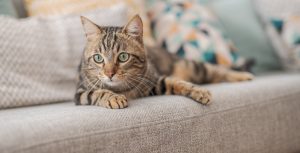
A tabby isn’t actually a breed of cat but rather a description of a cat’s markings. We’ve kicked off our list with it because it’s such a common response when people are asked what breed their cat is. In fact, there are plenty of registered pedigree cats that are ‘tabbies’ because of their beautiful markings. Did you know you can line 100 tabby cats next to each other and see 100 completely unique patterns and although they’ll usually all share the classic ‘M’ marking on their foreheads, all tabby patterns fall into one of five basic classes:
Classic – whilst the colours of the classic tabby can range from silvery greys to rich oranges, the classic tabby pattern will have whorls which form almost circle like patterns usually most prominent on their sides.
Mackerel – these tabbies will have darker bands around their tails and legs and stripes on the rest of their body.
Spotted – as the name suggests, spotted tabbies will have more spots than stripes across their coat, they’ll usually still form bands, but the darker fur will be broken up more by the lighter colours.
Patched – a patched tabby is sometimes referred to as a tortoiseshell because they’ll have more patches of lighter fur, usually red or orange, running throughout their coat.
Ticked – the ticked tabby has the clearest coat of the tabby collection, usually with just a few stripes on their tails or legs but they’ll usually have the characteristic ‘M’ on their foreheads.
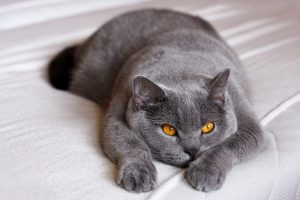
According to the Governing Council of the Cat Fancy (GCCF), the largest organisation that registers pedigree cats in the UK, the British Shorthair is the most popular pedigree cat breed in the UK. Over a quarter of all kittens registered with the GCCF are British Shorthairs and they go on to describe their temperaments as a patient breed that will go onto form strong bonds with their human companions.
When well cared for, this intelligent breed has an average life expectancy of 14+ years. Although they’re not especially prone to many specific health conditions, their slow metabolism means they can be prone to putting on weight. Whilst this friendly breed loves a cuddle, they’re not always picky about where to find new friends so make sure they’re microchipped, and your neighbours know not to feed them!
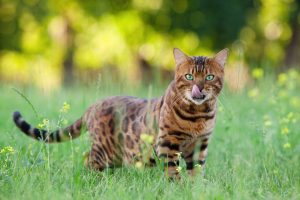
The Bengal cat has only been in the UK for around 20 years but in that time their popularity has skyrocketed. This stunning breed has a beautifully clear spotted or marbled coat that makes it easy to see their relation to their wild cat cousins. Whilst they might look like miniature wild cats, their personality is incredibly playful and confident which makes them ideal family pets. They’re even one of the few breeds of domestic cats to enjoy playing with water.
They have an average life expectancy of 12+ years and although they’re not overly susceptible to any specific health conditions compared to any other cat, their rising popularity means any potential new owners should ensure they’re only buying from a responsible breeder.
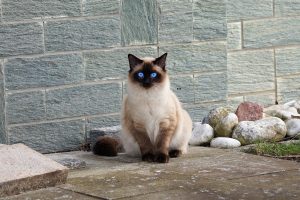
Anyone who’s watched the Disney classic, Lady and the Tramp will have an instant image of a Siamese cat, but they’re not as aloof as the movie would have you believe. their lithe, athletic bodies and distinctive blue eyes make them stunning to look at. This breed is intelligent, vocal and very sociable which means they’re not the best breed if you’re looking for a cat that’s going to be left alone for long periods.
This is an established breed of cat that has been around for hundreds of years and careful breeding has seen health conditions like eye squints and tail kinks almost eradicated in the UK. However, the Siamese cat can be more prone to illnesses like mediastinal lymphoma, intestinal tumours, and cat asthma than other breeds of cat.
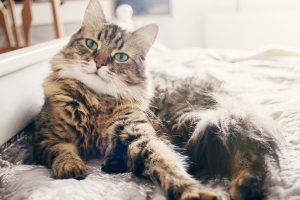
As far as domestic cats go in the UK, the Maine Coon is a large cat with some males easily reaching 20lb. Combined with their incredibly thick coat, they’re certainly not a breed you can easily miss. Whilst they’re considered an intelligent breed and independent, they’re very sociable creatures who don’t like being left alone for long periods. The Maine Coon is also a very chatty cat, they tend to chirp and they almost sound like they’re having a conversation with you.
This breed can easily live for 15 years when well cared for and their coats do require a lot of work. You’ll need to make sure you’ve got time to give their coat a proper brush every week and if they’re an outside cat, they’ll need daily checks especially in the summer to make sure they haven’t got grass seeds stuck in their coats.
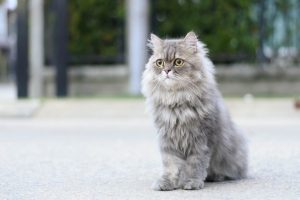
According to the GCCF, the Persian Cat is the most popular pedigree cat in the US and the sixth most popular in the UK. With their shorter legs, square bodies and thick tails they look smaller than many other pet cats, but they have a huge personalities. They’re gentle and very easy going and although they’ll always be happy to be the recipient of your attention, they don’t get as anxious when left alone as some cat breeds do.
A well-cared for Persian cat can live 15 years or more and as they’re less likely to go roaming compared to some cats, they can be less likely to wander off or get hurt. Their brachycephalic face means they can be predisposed to some health and breathing problems. It’s important you ask your breeder to show you a PKD certificate of your potential new cat’s parents to prove they’ve been screened for the gene that can lead to kidney failure.
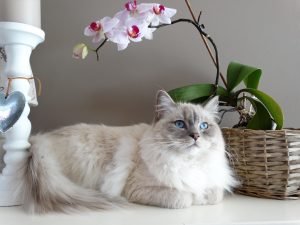
The Ragdoll got its name because they can relax to the point of going limp when they’re held. One of their most distinctive characteristics are their beautiful blue eyes and whilst they look a little bit like a Siamese, they have much longer fur. These highly affectionate cats are very family oriented; they’ll lap up any attention on offer and will quite frequently follow their owners around the house like an inquisitive puppy.
Ragdolls can be predisposed to heart failure at a young age. There is a test to let you know if your cat has the gene which can lead to this, and responsible breeders have been working hard to make sure this defective gene is bred out of the gene pool.
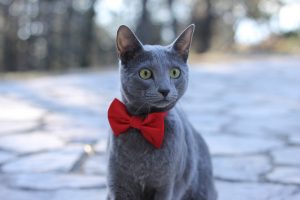
The Russian Blue is one of the most regal cats on the list and their dense blue fur almost looks like glistening silver as they move. You can also get a Russian Black and a Russian White with all colours containing the same highly intelligent characteristics. Once a Russian Blue has deemed you worthy of their affection, they’ll be incredibly loyal and affectionate. They’re great family pets because although they are friendly and playful, they’re equally content with their own company.
A well cared for Russian Blue will live into their late teens and as a breed, are considered very healthy and not predisposed to many health conditions. Their short, dense coat is easy to take care of and most Russian Blue’s will enjoy a nice soft brush groom when needed.
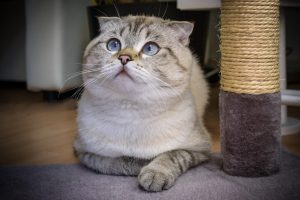
The Scottish Fold is not officially recognised as a pedigree cat breed by the GCCF and the British Veterinary Association has warned breeding of Scottish Fold cats should stop because of health fears. Unfortunately, popularity has increased for this breed following social media posts from celebrity owners, but their folded ears come from a genetic condition that can cause them to have short and painful lives.
Whilst some breeders claim cross-breeding the Scottish Fold with other breeds reduces the likelihood of health problems, the British Veterinary Association maintain “All cats with this folded ear appearance will have the genetic mutation. The rate at which they get the disease, and the severity of the disease can be different but they will all to some degree have an incurable, painful and lifelong disease”
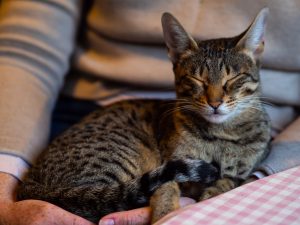
Despite being one of the top 10 most popular cat breeds in the UK, the Savannah cat is not recognised as a pedigree breed by the GCCF. The Savannah is a hybrid breed originating in a mix of the domestic Siamese and the wild Serval cat which is a medium build wild African cat. These days a Savannah can have either an original wild cat parent or two pure Savannah parents. They’ll usually have very large ears and a clear spotted coat and easily grow to 25lb.
They are very friendly once they’ve decided you’re worthy of their trust but they’re certainly not the most easy going pet with temperaments more akin to a dog than cat. They love to play, most love water and will think nothing of jumping into your bath with you and they like to keep active. As they’re a relatively new breed, it’s not yet known how predisposed they’ll be to illnesses.
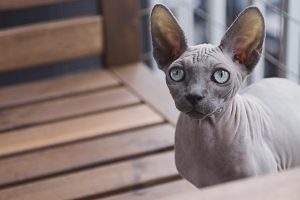
The Sphynx cat is perhaps one of the most recognisable breeds in the UK due to their lack of hair. This distinctive appearance makes them a bit of a marmite cat, most people either love them or hate them but they definitely shouldn’t be judged on their appearance alone. The Sphynx is one of the most affectionate and friendly cats you can meet, and most will never meet a lap they don’t like, or shoulder or leg or any other part of their human they can perch on. As a result, they’re not the most ideal pet if they’re going to be left alone for long periods of time but they do suit an active family very well.
It’s a common misconception that just because they have little hair, they’re hypoallergenic, they are not! They still produce dander from skin and saliva proteins. Whilst they don’t have the benefit of a thick fur coat to keep themselves warm, most Sphynx’s will find somewhere warm to cuddle up when it gets too cold but a made to measure coat wouldn’t go amiss.
These are just some of the more popular breeds of cats in the UK, there are many more. If you’re thinking of opening your home to a new set of paws and want some extra advice, we’re always happy to help.
However, if they suffer an illness or injury, it can also be both stressful and expensive. British Pet Insurance Services can provide the support you and your cat need, whether it is with your insurance cover, making a claim or just helpful advice along the way.
Get a quote